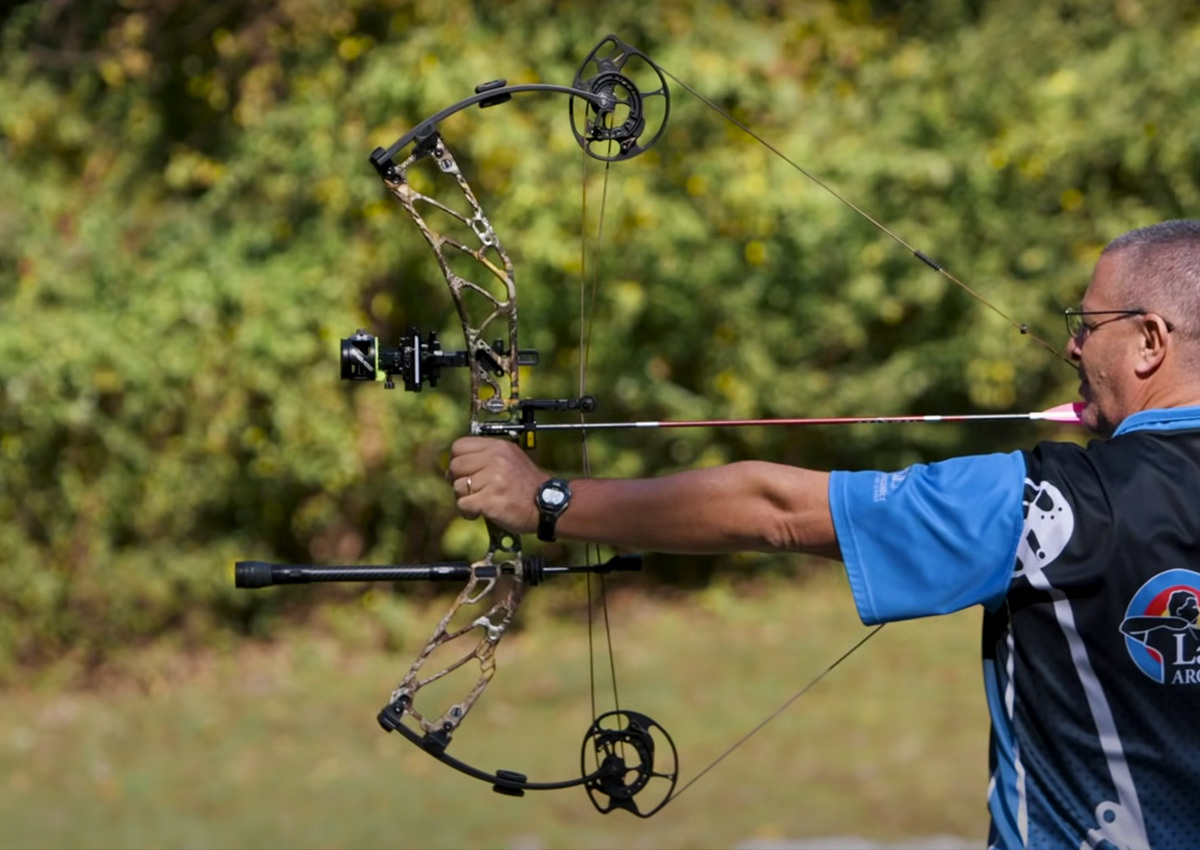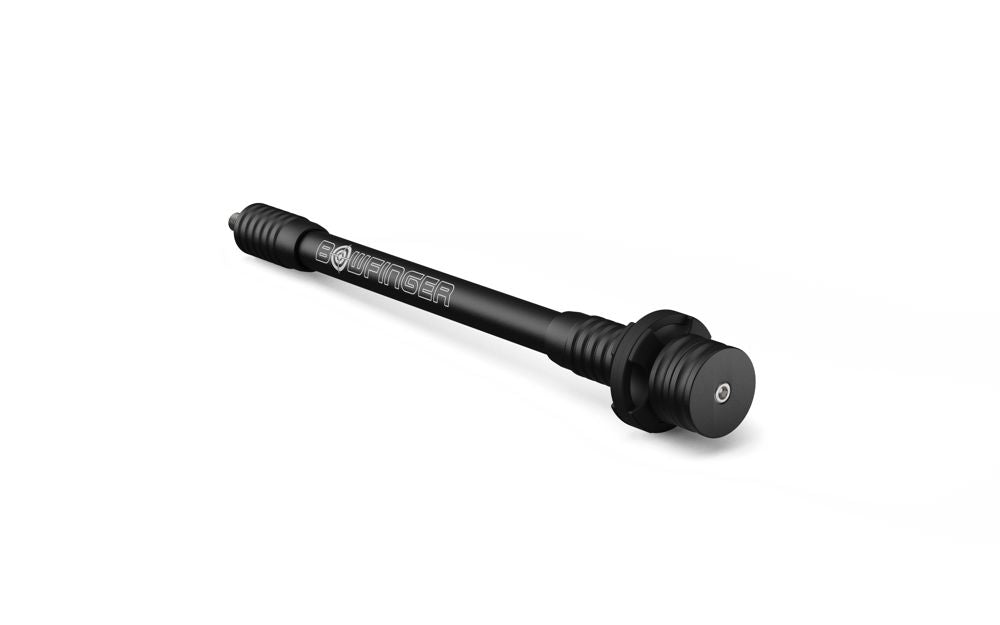Optimize Your Shot: Picking the Right Archery Stabilizer
Master the Art of Archery: Understanding the Relevance of a Stabilizer in Your Configuration
Whether one is a skilled archer or just starting their trip, the value of a stabilizer in their setup can not be overemphasized. By comprehending the advantages of making use of a stabilizer, thinking about the appropriate factors when picking one, and correctly installing and changing it, archers can boost their abilities to new heights.
The Role of a Stabilizer in Archery
A stabilizer plays an essential duty in archery by improving balance and reducing vibrations during the shot. A stabilizer helps to counteract these resonances by dissipating the power and absorbing (archery stabilizer).
Among the main benefits of a stabilizer is its ability to improve balance. When an archer holds a bow, it can be testing to keep a steady purpose. The weight of the stabilizer helps to disperse the weight evenly, minimizing the pressure on the archer's arm and boosting stability. This allows the archer to concentrate on their goal and execute a more exact shot.
In enhancement to equilibrium, a stabilizer likewise aids to lower torque. The weight and design of a stabilizer combat this rotation, making certain a much more exact and regular shot.
Advantages of Utilizing a Stabilizer
The use of a stabilizer in archery uses various advantages that improve an archer's performance and general shooting experience. First of all, a stabilizer helps to decrease the resonances created upon launch of the arrow. These resonances can create the acquiesce torque or twist, leading to unreliable shots. By taking in and moistening these resonances, the stabilizer improves the security of the bow, enabling even more precise and constant shots.
Second of all, a stabilizer helps to stabilize the bow by adding weight to the front end. This weight circulation counteracts the all-natural tendency of the bow to tip onward upon release, minimizing the quantity of movement and boosting the archer's capability to maintain goal on target.

Last but not least, a stabilizer can additionally work as a shock absorber, minimizing the shock and recoil experienced upon release. This not just enhances the comfort of capturing however also decreases the threat of injury or strain on the archer's body.
Just How a Stabilizer Enhances Precision
Enhancing the precision of an archer's shots, a stabilizer plays a vital function in enhancing total performance. archery stabilizer. By including security to the bow, a stabilizer assists decrease the undesirable movement and resonance that can occur during a shot. This reduction in movement enables the archer to keep a consistent objective, leading to even more consistent and precise shots

In addition, a stabilizer helps to moisten vibrations that take place upon launch. These vibrations can trigger the bow to shake, influencing the arrowhead's trajectory and precision. By taking in and dissipating these vibrations, a stabilizer assists to preserve the bow's security and ensure a precise and smooth shot.
In addition, a stabilizer can likewise help in balancing the weight distribution of the bow (archery stabilizer). By including weight to the front of the bow, a stabilizer helps to stabilize the weight of devices, such as views or quivers, which may be connected to the bow. This well balanced weight distribution helps the archer preserve a regulated and stable shooting setting, causing enhanced precision
Variables to Think About When Choosing a Stabilizer
When selecting a stabilizer for your bow, it is very important to consider a number of variables that will add to its overall effectiveness and viability for your individual shooting design. The very first factor to think about is the size of the stabilizer. Stabilizers can be found in numerous lengths, varying from short to long. Longer stabilizers typically give much more stability and balance, but they can also be heavier and harder to maneuver. Shorter stabilizers, on the various other hand, offer better ability to move but may sacrifice some stability.
One more variable to consider is the weight of the stabilizer. The weight of the stabilizer can influence the equilibrium of your bow.
Some stabilizers have flexible features, such as flexible size or flexible weights, which permit you to tailor the stabilizer to your details requirements. Carbon fiber stabilizers are lightweight and resilient, while light weight aluminum stabilizers provide a balance between weight and rigidness.
Lastly, it is important to consider your capturing style and choices. Different stabilizers may work much better for sure shooting styles, such as target capturing or searching. It is advisable to speak with knowledgeable archers or experts to figure out which stabilizer will certainly best match your individual requirements. In general, thinking about these factors will assist make sure that you pick a stabilizer that boosts your shooting experience and improves your accuracy.
Tips for Appropriately Mounting and Changing a Stabilizer
Longer stabilizers supply even more stability yet can be less maneuverable, while much shorter stabilizers offer enhanced ability to move yet may compromise security. Once you have actually selected the suitable size, connect the stabilizer to the bow utilizing the supplied mounting hardware. Ensure that the stabilizer is firmly attached and straightened with the bow's riser.
After mounting the stabilizer, it click for more is required to make changes to achieve the desired balance and shot uniformity. Beginning by readjusting the weight distribution along the stabilizer. This can be done by adding anchor or getting rid of weights from the stabilizer's weight system. Explore different weight arrangements to discover the equilibrium that functions finest for you. Additionally, think about changing the angle of the stabilizer to adjust the shot. A slight forward or backwards tilt can impact the bow's balance and just how it responds throughout the shot.

Conclusion
In conclusion, a stabilizer plays an important role in archery by improving precision and decreasing bow torque. When picking a stabilizer, variables such as material, size, and weight must be taken into consideration to satisfy individual requirements.
Additionally, a stabilizer can likewise help in balancing the weight distribution of the bow. By adding weight to the front of the bow, a stabilizer helps to stabilize the weight of accessories, such as quivers or views, which may be affixed to the bow. Some stabilizers have adjustable attributes, such as flexible size or flexible weights, which allow you to personalize the stabilizer to your particular demands. Carbon fiber stabilizers are sturdy and light-weight, while aluminum stabilizers offer an equilibrium in between weight and strength.
Longer stabilizers supply more stability however can be less manoeuvrable, while shorter stabilizers offer increased maneuverability however may give up stability.